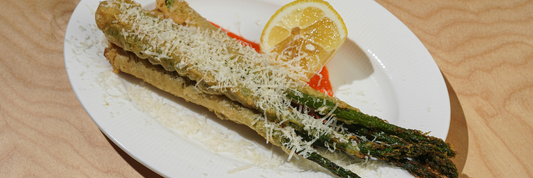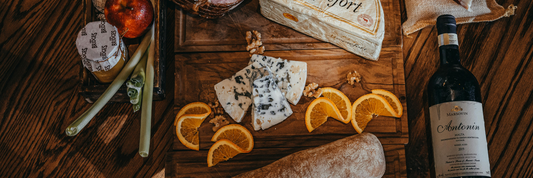Sushi is more than a meal it is an art form that embodies centuries of history, culture, and philosophy. From humble beginnings as a way to preserve fish to becoming a refined culinary tradition, sushi has traveled across time and continents to become one of the most beloved foods worldwide.
For sushi restaurant owners, food industry professionals, and enthusiasts in Canada and North America, understanding sushi’s story provides more than cultural insight it offers valuable lessons in authenticity, craftsmanship, and sustainability. At Kimecopak, we believe that these same values are essential in today’s food industry. That is why we support sushi restaurants with eco-friendly disposable plates, paper bowl, and sustainable packaging solutions that help preserve freshness while honoring the deep philosophy behind Japanese cuisine.
- The Psychology of Color in Ramen Takeout Packaging
- Comparing Bamboo vs. Sugarcane Packaging for Sushi Restaurants
- The Rise of Ghost Kitchens for Ramen: Packaging Challenges and Solutions
The Origins of Sushi in Japan

From Narezushi to Nigiri – A Journey Through Centuries
The roots of sushi stretch back more than a thousand years. Its earliest form, narezushi, was a preservation technique brought from Southeast Asia, where fish was stored in fermented rice to extend its shelf life. Over time, this method spread across Japan, eventually evolving into a more refined practice that focused on taste as much as preservation.
By the Edo period (1603–1868), sushi had transformed into nigiri-zushi hand-pressed rice topped with fresh fish. This version of sushi became a popular street food in Tokyo, offering busy city dwellers a fast yet delicious meal. Today, nigiri remains a cornerstone of sushi dining, symbolizing the balance between simplicity and sophistication that defines Japanese culinary arts (Japan National Tourism Organization).
Sushi as a Reflection of Japanese Culture
Sushi is deeply connected to Japanese values and traditions. One key element is shun, the principle of eating ingredients at their seasonal peak. Whether it’s tuna in winter or uni (sea urchin) in summer, sushi emphasizes nature’s rhythms and celebrates freshness.
Equally important is the concept of omotenashi, or wholehearted hospitality. Sushi chefs view each dish as a gesture of respect and care for their guests, serving not just food but an experience that reflects mindfulness and harmony.
The Philosophy Behind Sushi Craftsmanship

Simplicity and Balance
At the heart of sushi lies a philosophy of restraint. Instead of overwhelming flavors, sushi focuses on highlighting the natural essence of each ingredient. The rice is seasoned delicately, the fish sliced with precision, and garnishes are minimal always designed to enhance, never overshadow. This philosophy of “less is more” continues to inspire chefs and food creators worldwide.
Precision and Respect
Every step of sushi preparation requires meticulous attention to detail. From the exact temperature of the rice to the angle of each knife cut, sushi-making is a craft that demands discipline and respect for the process. This dedication reflects the Japanese principle of ichigo ichie “one time, one meeting” reminding us that each sushi experience is unique and should be cherished.
Sustainability as a Core Principle
Beyond taste and presentation, sushi has always been about living in harmony with nature. Japanese culinary philosophy teaches respect for natural resources, encouraging chefs to use ingredients thoughtfully and without waste.
Today, as consumers demand more eco-conscious dining experiences, this philosophy resonates strongly. Modern sushi restaurants are embracing sustainability not only in sourcing seafood responsibly but also in choosing eco-friendly packaging. With Kimecopak’s compostable sushi trays and biodegradable bowls, businesses can align with sushi’s timeless values while meeting the expectations of environmentally aware diners.
Sushi in the Modern World

Globalization of Sushi
What was once a traditional Japanese food has now become a global culinary phenomenon. From high-end omakase restaurants in New York City to grab-and-go sushi boxes in Canadian supermarkets, sushi has adapted to fit diverse cultures and lifestyles. According to Fortune Business Insights, the global sushi market size was valued at USD 22.5 billion in 2022 and is projected to grow steadily through 2030.
In North America, sushi has evolved into creative formats such as:
- Sushi burritos – blending convenience with bold flavors.
- Plant-based sushi – featuring ingredients like avocado, mushrooms, or jackfruit to cater to vegan consumers.
- Fusion rolls – incorporating local tastes, from spicy mayo in the U.S. to maple-infused sauces in Canada.
This adaptability shows sushi’s strength: it remains rooted in tradition while continuously innovating.
Sushi as Everyday Dining
Sushi has also shifted from being an occasional luxury to an accessible everyday option. Affordable kaiten (conveyor belt) restaurants and supermarket sushi counters have made it possible for consumers to enjoy sushi more frequently. For restaurant owners, this trend highlights the need to balance quality, affordability, and convenience to stay competitive.
Sushi and Sustainability Challenges

The Question of Seafood Sourcing
One of the greatest challenges facing sushi today is the sustainability of seafood. Popular fish such as tuna are under pressure from overfishing, pushing many chefs and restaurants to explore alternatives. Initiatives like the Marine Stewardship Council (MSC) certification help ensure seafood is responsibly sourced, giving both businesses and consumers confidence in their choices.
Eco-Friendly Packaging in Sushi Service
As sushi has become a leading option for takeout and delivery, packaging has taken center stage. Traditional plastic trays are convenient but raise serious environmental concerns. Consumers across Canada and North America are now demanding sustainable solutions that align with their values.
This is where Kimecopak’s eco-friendly sushi packaging provides an advantage:
- Compostable sushi trays made from bagasse and kraft paper.
- Grease-resistant bowls and boxes that maintain freshness.
- Windowed kraft boxes for visual appeal without plastic lids.
By adopting these solutions, sushi restaurants can not only reduce their carbon footprint but also strengthen brand reputation among eco-conscious diners.
The Enduring Art of Sushi

Sushi has always been more than food it is a story of history, philosophy, and evolution. From ancient preservation methods to today’s global culinary innovation, sushi reflects timeless values of balance, precision, and respect for nature.
For restaurant owners and sushi chefs, honoring this heritage means more than crafting perfect nigiri it also means embracing modern practices that align with sushi’s philosophy of harmony. In 2025 and beyond, sustainability will be a key part of this journey.
At Kimecopak, we believe that every sushi experience should embody both authenticity and responsibility. By choosing eco-friendly disposable bowls, kraft sushi containers, and compostable trays, sushi businesses can continue the tradition of excellence while protecting the planet for future generations.
Smart Labels and QR Codes: Adding Transparency to Sushi Packaging
FAQs – The Art and Future of Sushi
1. When did sushi originate in Japan?
Sushi traces its roots to the 8th century with narezushi, a method of preserving fish in fermented rice. Modern nigiri sushi became popular during the Edo period in the 19th century.
2. Why is sustainability important in sushi?
Sustainability ensures the long-term availability of seafood and reduces the environmental impact of packaging and waste. It’s essential for protecting ocean ecosystems and meeting consumer expectations.
3. What are the latest sushi trends in North America?
Popular trends include sushi burritos, vegan sushi, omakase experiences, and sustainable packaging solutions.
4. How can sushi restaurants reduce their environmental footprint?
By sourcing seafood responsibly, minimizing food waste, and adopting eco-friendly packaging like Kimecopak’s compostable bowls and kraft sushi containers.
-
LEARN MORE about How "Subscribe for a Happy Life" will benefits your business HERE!
-
LEARN MORE about Kim Vu, sharing on the challenges she faced as a former restaurant owner, and how she overcame them to create KimEcopak HERE!




